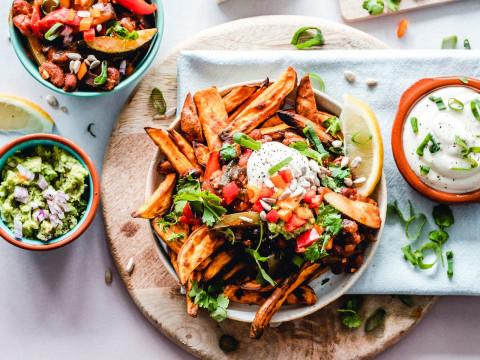
photo: pexels, ella olsson
English author Virginia Woolf famously stated: ‘One cannot think well, love well, sleep well, if one has not dined well.’
When we buy the ingredients needed to prepare our meals, we want to make food that we like and which our dinner guests will also enjoy. Certain places, regions, and countries conjure up an intrinsic relation to the tastes and recipes they are famous for: Parmigiano Reggiano ‘screams’ Italy in the same way as we associate Armagnac with France and Dalmatinski pršut with Croatia. When we reminisce, we all have foods that, over the years, have forged a deep link to our loved ones, including parents and grandparents.
In short: food takes up a substantial part of our time and plays a significant role in shaping our life and, with that, also our identity. But how does intellectual property (‘IP’) law protect it?
IP and food: a tour d’horizon
Food and drinks can be protected through IP law in different ways.
Starting with trade secrets, the best-known example of a secret recipe probably remains that of Coca-Cola. First developed in 1886, more than 135 years later, the 7-ingredient recipe of the famous beverage is still – officially – a mystery. Despite that, over time, attempts have been made to unveil such a recipe. It is believed that solely two Coca-Cola top executives know exactly how the various ingredients are to be combined.
Patents and copyright are also available. The method for manufacturing Dutch Heksenkaas (‘witch’s cheese’) was patented in 2012. This cheese spread was also at the centre of litigation before the Court of Justice of the European Union (‘CJEU’), which famously had to decide whether the taste of a food product (so not the recipe, which may be safeguarded in the same way as a book or poem) could be protected by copyright in itself. The CJEU ruled that, in principle, ‘sensory’ objects like taste and smell are not excluded from copyright. What is needed, however, is a system that allows to identify a taste or smell in a precise and objective manner. Such a system does not seem to be available just yet, but it might well be developed in the future!
Issues similar to those of copyright have been also faced by those trying to register smells and tastes as trade marks: over time, the EUIPO has famously rejected applications to register ‘the taste of artificial strawberry flavour‘ and ‘the smell of vanilla‘. The CJEU has also confirmed that a smell simply described as ‘balsamically fruity with a slight hint of cinnamon’ could not be registered as a trade mark.
Geographical indications (more and more) on the rise
In all this, geographical indications (‘GIs’) are deserving of a special mention. By indicating that a product – e.g., a certain food or wine – has a specific geographical origin, a GI essentially protects the reputation or qualities of that product as stemming from its place of origin.
For example, when you buy some Danablu cheese at your local grocery store, you know that you are acquiring a product with certain features as this is a protected GI. This means that the use of that name is reserved for cheese makers that produce their cheese in Denmark, from Danish milk, and in accordance with set specifications.
The same goes for several other food products and wines that are produced across the EU territory: besides Parmigiano Reggiano, Armagnac and Dalmatinski pršut and just to mention but a few, Δαφνές (‘Dafnes’ wine from Greece), Budapesti téliszalámi (salami from Hungary), Clare Island Salmon from Ireland, and Драгоево (‘Dragoevo’ wine from Bulgaria) are all registered GIs.
Over time, the importance of GIs has increased, also because this particular IP right is considered instrumental to the realisation of objectives that include the preservation of the agrifood system and related social networks, as well as economic, sociocultural and environmental sustainability and the protection of cultural heritage. It is also for these reasons that, recently, the European Commission proposed legislation that would establish an EU system to protect, as GIs, not just agricultural products, but also craft and industrial products.
A buffet of IP rights
There are several ways to protect foods and wines through IP law and, with that, safeguard the expertise, skills, and talent that are embodied in them. GIs also offer a way to acknowledge the special link between a place and the qualities and reputation of agricultural products originating from there.
Going back to Woolf’s quote: it is true that ‘One cannot think well, love well, sleep well, if one has not dined well’. Sometimes, however, this is not enough. To dine well, it may be also necessary to think about the IP rights that protect what one is about to eat and drink. In sum: dinner parties can, on occasion (or even always?!), become more enjoyable when you have an IP lawyer sitting at your table!